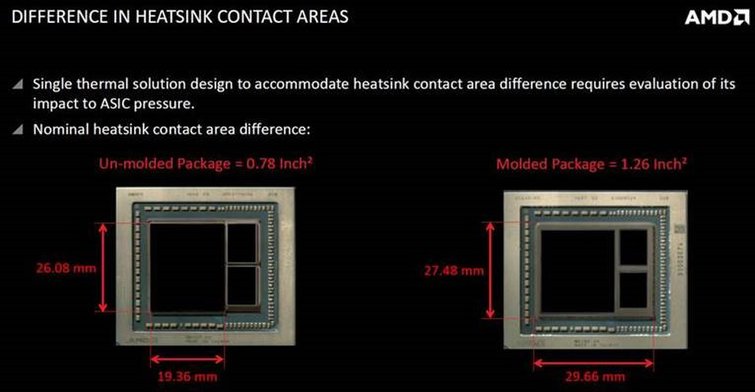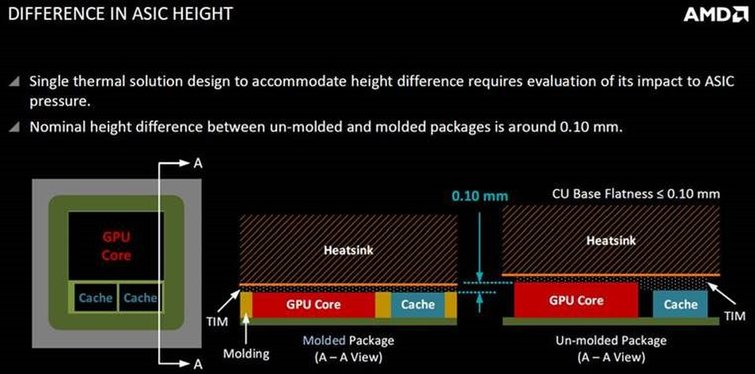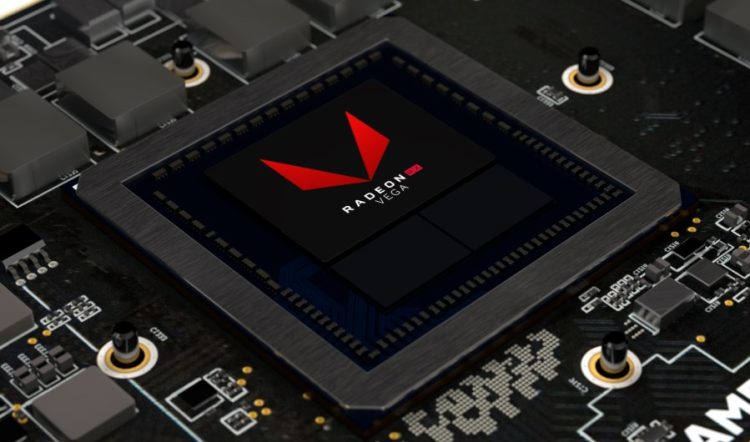One week ago, we published an article regarding the discovery of the different build and finish quality of AMD’s Vega 10 GPU. This time round, folks at Tom’s Hardware have apparently obtained confirmation directly from folks working with AMD regarding the existence of multiple Vega 10 GPU variants.
Most of us may know of the fact that both the Radeon RX Vega 64 and RX Vega 56 are equipped with AMD’s Vega 10 GPU. Their apparent – and expected – differences range from Compute Unit count, TDP rating, and etc. What isn’t “normal” is how the same Vega 10 GPU comes in multiple types of finishes.

According to Tom’s Hardware “special” presentation slides were sent out by AMD to its AIB partners, which contain details about two different Vega 10 GPU packages. The first Vega 10 variant is described as the “un-moulded package” and its has an area of 0.78 inch². The other Vega 10 GPU is called the “molded package” and it has a larger surface area of 1.26 inch².
What these descriptions basically mean is that one variant of the Vega 10 GPU comes with a “molding” which consists of epoxy-like material to cover gaps between the GPU and HBM2 memory controller; this ensures that both the GPU and memory controller are at the same height. That said, the other Vega 10 GPU package comes with no molding, which means that the GPU is slightly “taller” compared to the HBM2 memory.

As mentioned in our previous article, the discrepancies between AMD’s Vega 10 GPU are most likely caused by the company employing more than one manufacturer to assemble Vega GPUs. It’s believed that Vega 10 GPUs are currently being manufactured in Taiwan (TSMC?) and South Korea (SK Hynix?).
While this may not necessarily be a problem for reference Radeon Vega graphics cards, AMD’s custom AIB partners may face difficulties in designing a cooling system for custom RX Vega graphics cards. One has to remember that slight differences in height of both the GPU package and VRMs may cause inefficient cooling for a graphics card.
Regardless, it’ll be interesting to see how manufacturers like Asus, Gigabyte, MSI, and etc will come up with a solution for this so-called “GPU problem.”
(Source: Tom’s Hardware)


